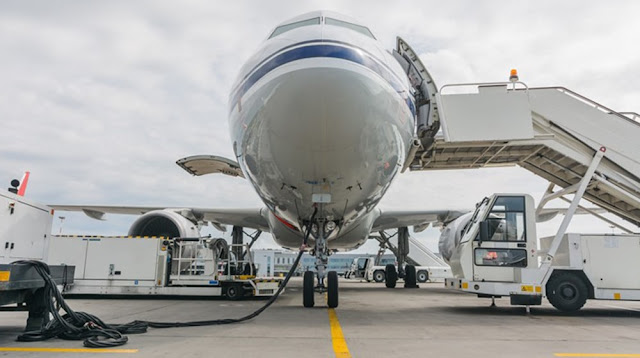Airport security lines snaking out of the terminal onto sidewalks, long waits for rental cars and not enough jet fuels — all were issues for travelers at Austin's busiest airport this weekend. A surge in travel has strained airlines, who often must refuel at AUS' two-tank facility. Airline executives and officials at the airport say a new fuel storage facility is necessary to keep up with growing demand. But neighbors are fighting the plan to build the facility on a seven-square-mile piece of land near US 183.
Safety
When operating a jet fuels facility, Jet Fuels
Austin TX takes measures to ensure the safety of its employees and customers.
They do this by regularly undergoing inspections, and by having an emergency
response plan.
During a presentation to the City Council,
officials said that if there is a spill, they will be in a safe containment
structure and have corrosion detection systems, which will notify operators
long before the leak occurs.
But if the jet fuel leaks, it can cause an
explosion and could injure people nearby or damage aircraft.
Residents of a neighborhood in South East
Austin who live near the jet fuel facility have raised concerns about the
potential health impacts. Some, like Yancy Carrillo, went door-to-door and
asked neighbors to sign a petition opposing the project.
Environmental Impact
When operating a jet fuels facility, the environmental impact
can be significant. The fuel used in aircraft flies much heavier than gasoline
and can cause operational issues as airlines try to balance getting a plane
ready for flight while keeping passengers safe on board.
Austin-Bergstrom International Airport CEO
Jacqueline Yaft told Council members that the current airport fuel storage area
is on 10.5 acres, separates from homes and businesses and is inspected by the
airport’s fire department crew as well as third-party firms.
However, a new tank farm proposed for McCall
Lane in East Austin is causing some pushback. Neighbors are concerned that it
could leak toxic fumes into the neighborhood.
After meeting with city officials, Carrillo
and several neighbors started gathering signatures to protest the project.
They’re also asking the airport and city to release more information about the
long-term impacts and potential risks of living near a jet fuel facility.
They’re calling the plan a violation of environmental justice.
Costs
High jet fuels prices have a significant
impact on commercial and private flight ticket costs. According to industry
website GasBuddy, regular unleaded gasoline in Austin is currently averaging
$3.14 per gallon, which is 37 cents higher than a month ago and 16 cents higher
than a year ago.
The cost of jet fuel varies depending on the
destination and type of aircraft. For example, a trip from Chicago O'Hare
International Airport to Miami International Airport requires an estimated
2,350 gallons of jet fuel.
However, the price of jet fuel can also
fluctuate due to factors such as natural disasters or political upheaval. These
factors could affect the amount of fuel airlines have available at their fuel
facilities.
In Austin, the city's fast-growing airport is
bursting at the seams and is expected to handle 20 million passengers this
year. The city's aviation department is working to expand its jet fuel storage
facilities, including a facility that would hold two 1.5-million-gallon tanks
on the western edge of the airport property next to US 183 and across from a
neighborhood.
Reputation
Austin-Bergstrom International Airport faces a
shortage of jet fuels due to growth, forcing arriving
planes to refuel in Dallas or Houston. The airport typically holds one to two
days' worth of fuel, compared with five-to-seven days at other major airports,
according to Sam Haynes, a senior public information specialist at the airport.
As a result of this, Austin has recently
experienced jet fuel shortage alerts. When airlines don't have enough fuel in
their tanks, they can be forced to divert flights and even cancel them
altogether.
Residents and activists, including the
Southeast Austin Neighbors and Residents Organized for Environmental Justice
(SANAR), have protested the development of a new jet fuel facility, located
just west of U.S. 183 in close proximity to homes and businesses in Southeast
Austin, for months. SANAR has gathered signatures and attended City Council
meetings to voice their concerns about the construction of the facility, which
was supposed to begin this spring.
